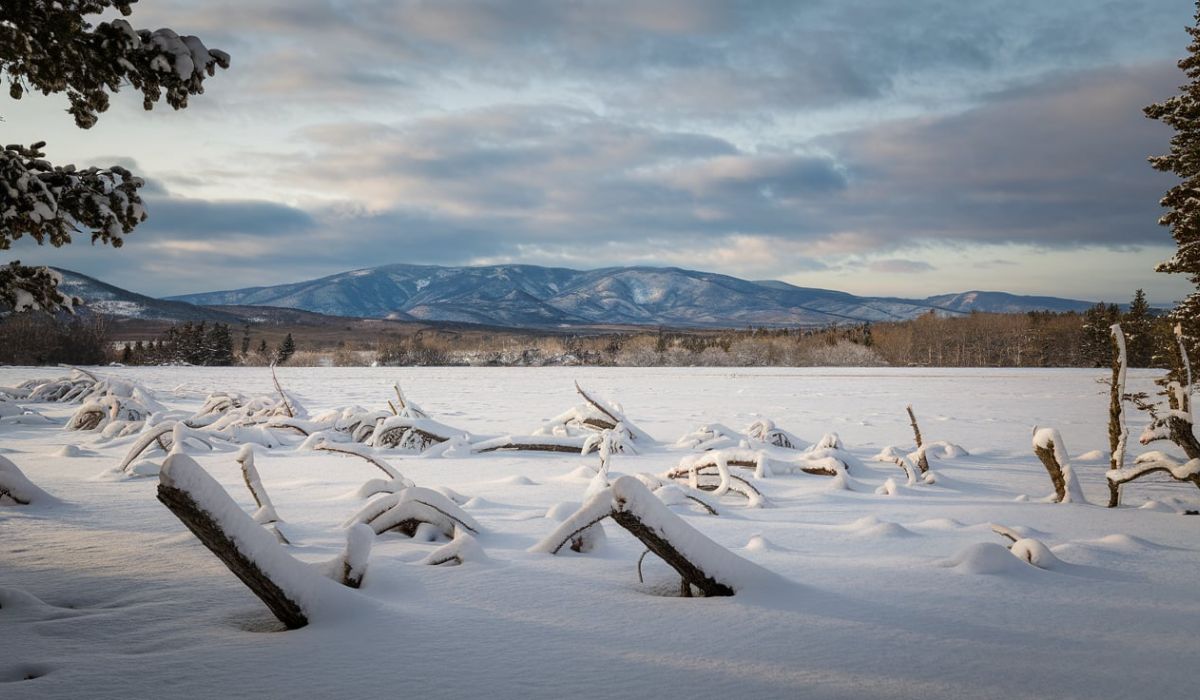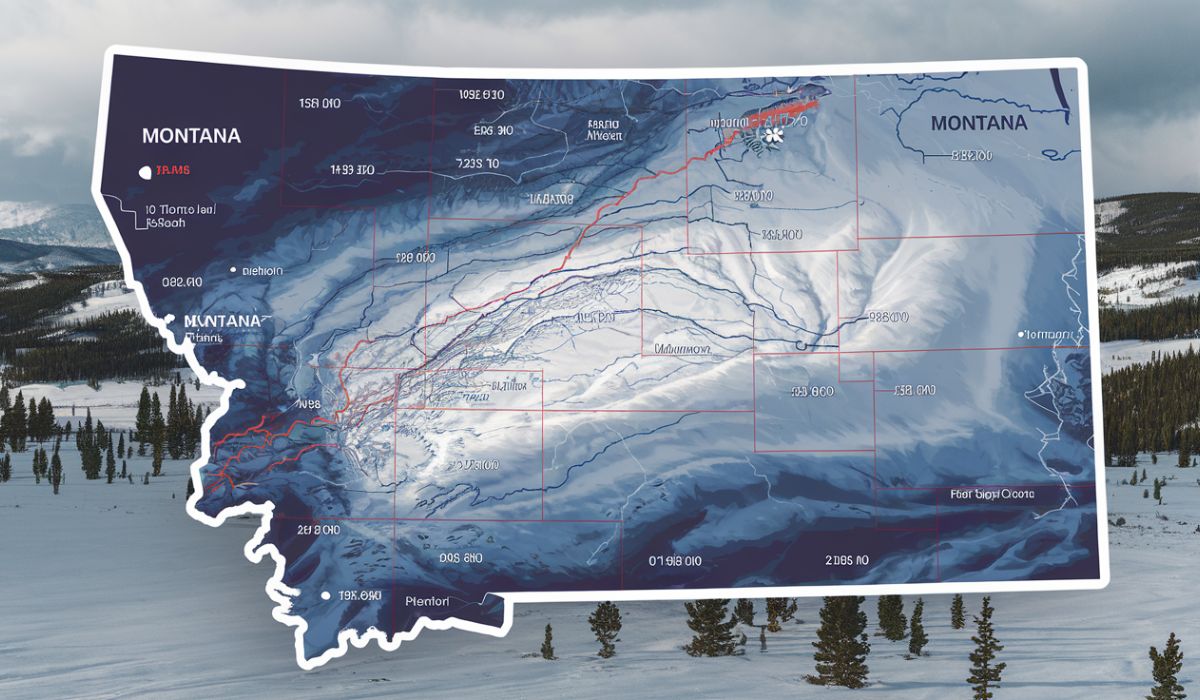Montana’s winters can be as unpredictable as a cat on a hot tin roof. One moment, the sun is shining; the next, a winter storm warning flashes across your screen. But what exactly does a “winter storm warning” mean for Montanans, and how can you prepare? Let’s dive into the essentials.
Introduction to Winter Storm Warnings

When the National Weather Service (NWS) issues a winter storm warning, it’s akin to a friend urgently advising you to grab an umbrella before stepping into a downpour. It signifies that severe winter weather conditions—such as heavy snow, sleet, or ice—are imminent or already occurring. In Montana, these warnings are crucial for residents to take immediate action to protect themselves and their property.
The Anatomy of a Winter Storm
Winter storms are complex systems that can include:
- Heavy Snow: Rapid accumulation can lead to treacherous travel conditions.
- Sleet: Ice pellets that can make surfaces slippery.
- Freezing Rain: Rain that freezes upon contact, creating a glaze of ice.
- Strong Winds: Can cause blowing snow, reducing visibility and leading to drifts.
Understanding these components helps in anticipating the challenges a storm might bring.
How Winter Storm Warnings Are Issued
The NWS monitors atmospheric conditions using advanced technology and issues warnings based on specific criteria. For instance, a warning might be issued if:
- Snowfall: Expected to accumulate significantly within a short period.
- Ice Accumulation: Predicted to reach levels that could disrupt power and travel.
- Combination of Factors: Such as snow followed by freezing rain and high winds.
These warnings are disseminated through various channels, including local news, weather apps, and official NWS platforms.
Recent Winter Storm Warnings in Montana

Montana’s diverse topography means that winter storm warnings can vary across the state. For example, in October 2024, a warning was issued for southwest Montana, including areas like Big Sky and West Yellowstone, anticipating heavy snow and gusty winds.
Similarly, in January 2025, the East Glacier Park Region faced a winter storm warning with expectations of significant snowfall and strong winds.
Potential Impacts of Winter Storms
The effects of winter storms in Montana can be far-reaching:
- Travel Disruptions: Snow-covered roads and reduced visibility can make driving hazardous.
- Power Outages: Ice accumulation can damage power lines.
- Property Damage: Heavy snow can strain roofs; falling branches can cause additional harm.
- Health Risks: Prolonged exposure to cold can lead to frostbite or hypothermia.
Being aware of these potential impacts underscores the importance of preparedness.
Preparing for a Winter Storm
Preparation is your best defense against winter storms. Consider the following steps:
- Stay Informed: Regularly check weather updates from reliable sources like the NWS.
- Emergency Kit: Assemble essentials such as non-perishable food, water, flashlights, batteries, and a first-aid kit.
- Home Maintenance: Insulate pipes, check heating systems, and ensure your home is well-sealed against drafts.
- Vehicle Readiness: Keep your gas tank full, check tire tread, and store emergency supplies in your car.
Staying Safe During the Storm

When the storm hits:
- Limit Travel: Stay off the roads unless absolutely necessary.
- Stay Indoors: Keep warm and avoid exposure to the cold.
- Use Caution with Heaters: Ensure proper ventilation to prevent carbon monoxide poisoning.
- Stay Connected: Keep devices charged and maintain communication with family and neighbors.
After the Storm: Recovery and Safety
Once the storm passes:
- Clear Snow Safely: Avoid overexertion when shoveling snow.
- Check on Vulnerable Individuals: Ensure that elderly neighbors or those with disabilities are safe.
- Inspect Property: Look for damage and address issues promptly.
- Stay Informed: Continue monitoring for any updates or additional warnings.
The Role of Local Authorities
Local authorities play a pivotal role during winter storms by:
- Issuing Alerts: Providing timely information about weather conditions and safety measures.
- Managing Roadways: Deploying snowplows and de-icing agents to keep roads passable.
- Emergency Services: Responding to accidents, power outages, and other emergencies.
Residents are encouraged to heed the guidance of local officials during such events.
Conclusion: Embracing Montana’s Winters
While winter storms present challenges, with proper preparation and awareness, Montanans can navigate the season safely. Embracing the beauty and power of winter requires respect for nature’s forces and a commitment to readiness.
FAQs
Q1: What should I do if I receive a winter storm warning in Montana?
Stay informed through reliable weather updates, prepare your home and vehicle, and limit travel during the storm.
Q2: How can I stay updated on winter storm warnings?
Regularly monitor the National Weather Service’s website and local news outlets for the latest information.
Q3: What items should be in a winter emergency kit?
Include non-perishable food, water, flashlights, batteries, a first-aid kit, necessary medications, and warm clothing.
Q4: Are winter storm warnings common in Montana?
Yes, due to its northern location and varied terrain, Montana frequently experiences winter storm warnings during the colder months.
Q5: How do winter storms affect travel in Montana?
They can lead to hazardous driving conditions, road closures, and delays. It’s essential to check road conditions before traveling and avoid unnecessary trips during severe weather.
For More Visit, rankshort
